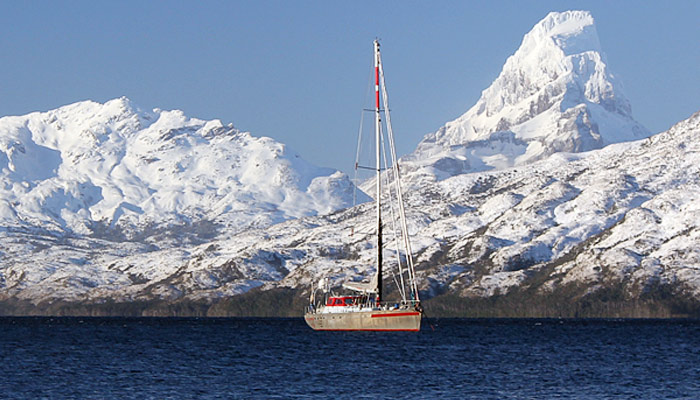By Larry, Tuesday, Nov 5
It's all upwind. Amy wants to know if we'll ever get to Stanley. Others wake up for their watch and say "good morning, are we still at sea?" The instruments count down the distance to waypoint (Stanley). Yesterday we were 350 miles, this morning we're under 200.
Somehow, I'm thinking different thoughts. I like it out here. I won't get to see the Southern Ocean again for a while and it's been great to be allowed passage so far by Neptune. I prefer another week or two at sea. I feel like we're just beginning to get into a good rhythm and in my experience it just gets better, the longer we're offshore.
We've navigated right on the edge between the South Atlantic High Pressure which is relatively stationary and the northern extents of the lows streaming through the Drake to our South. Skip's other boat, the 54 ft Pelagic crossed the Drake and was hove to for 2 days in 40-50 knots of wind. That's what happens when you have to go through the lows. The other advantage of staying with the high is the sunny weather. The wind has been up to about 40 knots but most of the time in the 20s and 30s for the past two days. We just made what I hope is our last tack for final approach from 150nm out. If the forecast continues to be as reliable as it has been, this should give us a nice close reach into Port Stanley by around 1pm UTC tomorrow (Wednesday, about 8am EST).
The birds were spectacular today. We had again about 50-100 birds following us. Many Black-Browed Albatross, Wandering Albatross, Sooty Albatross, Giant Southern Petrels and lots of smaller Cape Petrels. All day they would soar right up to the side of the boat to check us out and say hello. They would fly along sometimes within 6 feet of the boat. But the boat was going to slow so they'd have to soar away to keep above their stall speed and then they would circle back to have another look. When we hoisted to full main and jib, the birds started playing in the pressure wave just in front of the boat, often just flying in front of us like guides, telling us which way to go very much like dolphins who play in the pressure wave of the bow. We did see a few of them land on the water, contrary to popular belief that they never do so. I even captured a movie of one landing on the water.
We also have had a number of visits from Cape Porpoises, which are small dolphins that are very playful and curious. Still waiting to see the whales, but it may just not be the right time or the krill may be in another part of the Southern Ocean at this moment.
We're now just about to have dinner as the sun sets on presumably, our last night at sea. Amy and I are on watch until just after sunset, but everyone is up and enjoying the camaraderie and the smoother seas.
--



